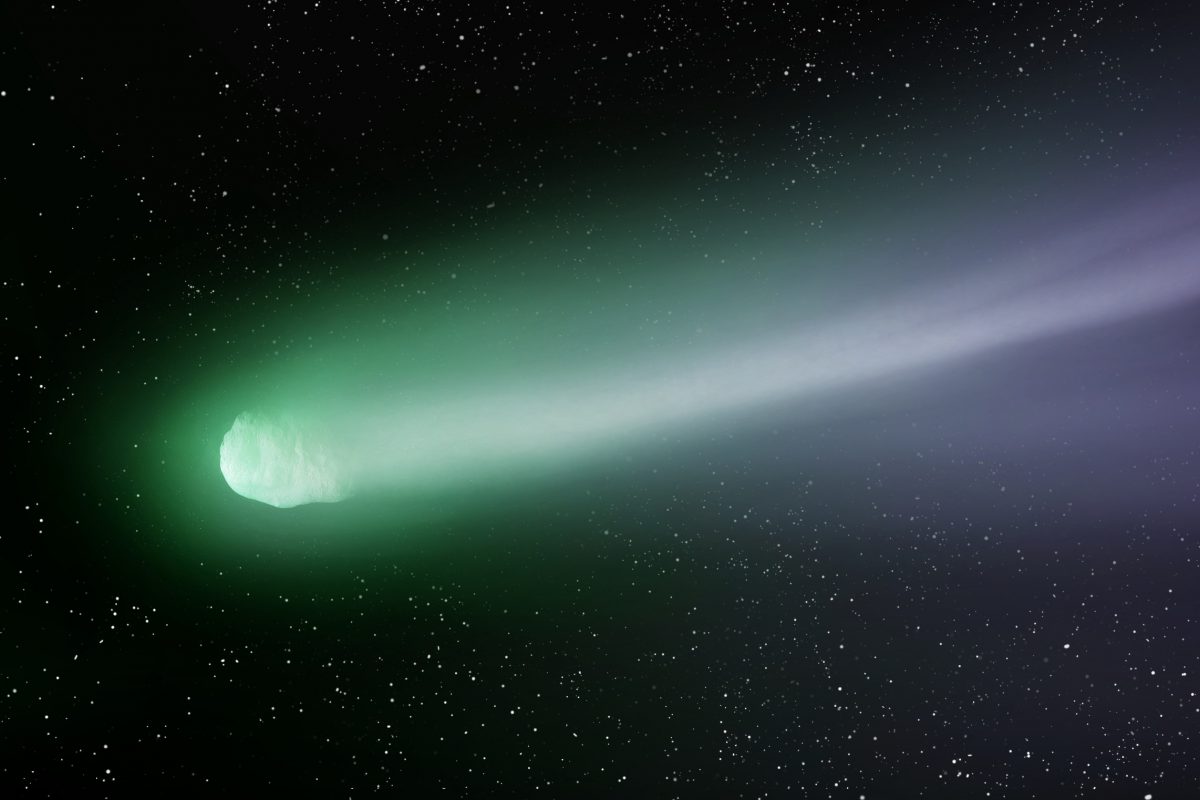On February 1st, a comet named C/2022 E3 (ZTF) with a bright green color will come close to Earth for the first time in 50,000 years. It will pass by at a distance of 26 million miles (42 million kilometers) from Earth, providing a unique night sky view that hasn't been seen since the time that modern humans roamed the Earth alongside one of the many extinct human species, the Neanderthals.
However, you don't have to wait until February to catch a glimpse of the comet, as it is already visible in the sky during late night and early morning. Stargazers have been tracking the comet's path for several weeks and had a great view of it on January 12th when it made its closest approach to the sun, a maneuver known as perihelion.
Here’s everything that we know about the green comet so far.
C/2022 E3 was first detected by astronomers in March 2022, when it was traveling through the solar system at a distance of 399 million miles (642 million km) from the sun, within the orbit of Jupiter. At that time, it was relatively faint, about 25,000 times fainter than the dimmest stars visible to the naked eye. However, researchers were able to make out a distinct tail or coma, which confirmed that it was a comet, not an asteroid. Asteroids are made of rock, while comets are made of ice and dust particles that vaporize as they approach the sun, creating a visible tail. Both asteroids and comets orbit around the sun.
By January 12th, 2023, the comet had moved much closer to Earth, about 300 million miles (482 million km) closer, and was visible in the night sky near the northern constellation of Corona Borealis. Since then, it has continued moving westward across the sky. According to experts, the comet will be visible to the naked eye by the third week of January, and it should be easy to spot if you have a clear view of the sky and you know where to look for it.
On the nights of January 26th and 27th, the comet may be visible just east of the Little Dipper's bowl. By February 1st, when the comet makes its closest approach to Earth, it will appear near the constellation Camelopardalis, in close proximity to the Big Dipper. These are approximate locations, and the comet's position in the sky may vary slightly due to its motion. It's always recommended to check with local observatories or sky maps for the most accurate and up-to-date information.
Around February 5th and 6th, a few days after its closest approach to Earth, the comet will move across the night sky to the west of the star Capella and then it will appear to enter the constellation Auriga. After that, it will continue moving down towards Taurus, becoming increasingly faint as it moves away from Earth, and back out towards the edge of the solar system.
Why is this comet green?
The comet itself is not naturally green, but its head appears to emit a green glow due to a rare chemical reaction. The green coloration is likely caused by diatomic carbon (C2), which is a simple molecule comprised of two carbon atoms bonded together. When ultraviolet light from the sun causes this molecule to decay, it emits a green glow that can persist for numerous days. This is according to a study published in the Proceedings of the National Academy of Sciences in 2021.
This unique green light does not reach the comet's tail, or coma, which is made of gas. The gas in the coma is created by solar radiation, specifically, sunlight causes the comet to sublimate, or change from a solid to a gas without passing through the liquid phase. This gas creates the tail that streams behind the comet, which is often seen as blue in color due to the ultraviolet light.
Unfortunately, if you live in the southern hemisphere, there’s no guarantee that you’ll get to see the comet until its closest approach to Earth. Thereafter, it’ll be visible in the South for a short while before fading from view. We don’t know when this comet will return, but it likely won’t be within the lifetime of anyone alive today.
- Karlston
-

 1
1




Recommended Comments
There are no comments to display.
Join the conversation
You can post now and register later. If you have an account, sign in now to post with your account.
Note: Your post will require moderator approval before it will be visible.